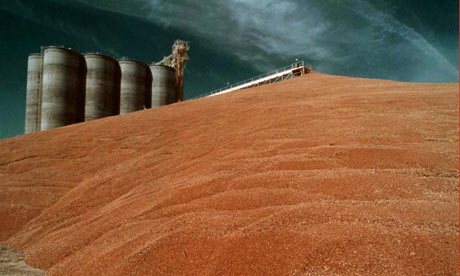






This video, which has lovely footage and music, was actually produced in Greece.







"A human being is a complex organization of electrical fields. Electroencephalograms and electrocardiograms, for example, measure these fields. Every cell has an electrical field across the cell membrane, which is a regulatory interface and controls what goes into and out of the cell. All nerve signals are electric. And between the nucleus and the membrane there is an electrical field, you can measure voltages of individual cells! Electricity drives biology. We evolved in a particular electromagnetic environment"—the magnetic fields from the earth's iron core, the terrestrial magnetism from lodestones, visible light, ultraviolet frequencies, lightning—"and if we change that environment as we have, we either adapt or we have trouble."




Scott Talbott, an assistant division chief with Wyoming's Fish and Game Department, calls it "wanton destruction" that goes beyond shooting.
Poachers run down deer with cars or snowmobiles, and chase raccoons, then beat them to death with clubs. They also shoot deer, elk and antelope, sometimes removing valuable antlers but often leaving the carcass to rot on the ground, Talbott and other wildlife officials said.
"It's thrill killing — people just going out and killing stuff," Talbott said. "We have seen a significant increase of that in Wyoming. It's disturbing."
And it's not limited to Wyoming - there are reports of the same behavior in Pennsylvania, Wisconsin and other states. It's called a "trend" that has emerged in recent years:



"The 2009 figures from the US Department of Agriculture shows ethanol production rising to record levels driven by farm subsidies and laws which require vehicles to use increasing amounts of biofuels.
"The grain grown to produce fuel in the US [in 2009] was enough to feed 330 million people for one year at average world consumption levels," said Lester Brown, the director of the Earth Policy Institute, a Washington thinktank ithat conducted the analysis.
Last year 107m tonnes of grain, mostly corn, was grown by US farmers to be blended with petrol. This was nearly twice as much as in 2007, when Bush challenged farmers to increase production by 500% by 2017 to save cut oil imports and reduce carbon emissions.
More than 80 new ethanol plants have been built since then, with more expected by 2015, by which time the US will need to produce a further 5bn gallons of ethanol if it is to meet its renewable fuel standard."
In yet another article, scientists express concerns about the impact of nitrous oxides necessary to fertilize biofuel growth.
"Scientists at the European commission have cast doubt on whether biofuels could ever be produced sustainably in significant quantities, dealing a blow to the aviation industry, which sees such fuel as a key way to reduce its emissions.
The researchers argue that the greenhouse gases emitted in making biofuel may well negate most of the carbon dioxide savings made by replacing fossil fuels. Of particular concern is the uncertainty over emissions of the potent greenhouse gas nitrous oxide.
Heinz Ossenbrink, of the EC's Institute of Energy (IoE), said research carried out by EU-funded scientists increasingly pointed to a long-term problem for large-scale biofuels use, namely the emissions of nitrous oxide. This is about 270 times more potent than carbon dioxide as a greenhouse gas and is released through use of fertilisers to grow biofuel crops. "Some of the older studies don't take that into account," he said. "We have now come to less positive values for biofuels."











The symptoms usually develop slowly, and may not be noticed immediately. The leaves may become smaller and fewer in number. The crown of the tree often thins out. New terminal growth may be limited, and branches may die. Abnormally large seed crops are sometimes associated with decline, as is early fall color and leaf drop. Trees affected by decline may survive for many years, or may die within a few years.
That pretty much summarizes the condition of every single tree still clinging to life in New Jersey. The example above and, closer up, below is in the process of breaking apart, about 20 feet above the ground.







